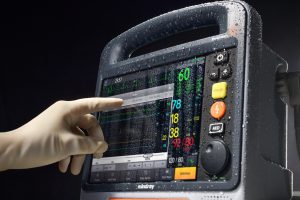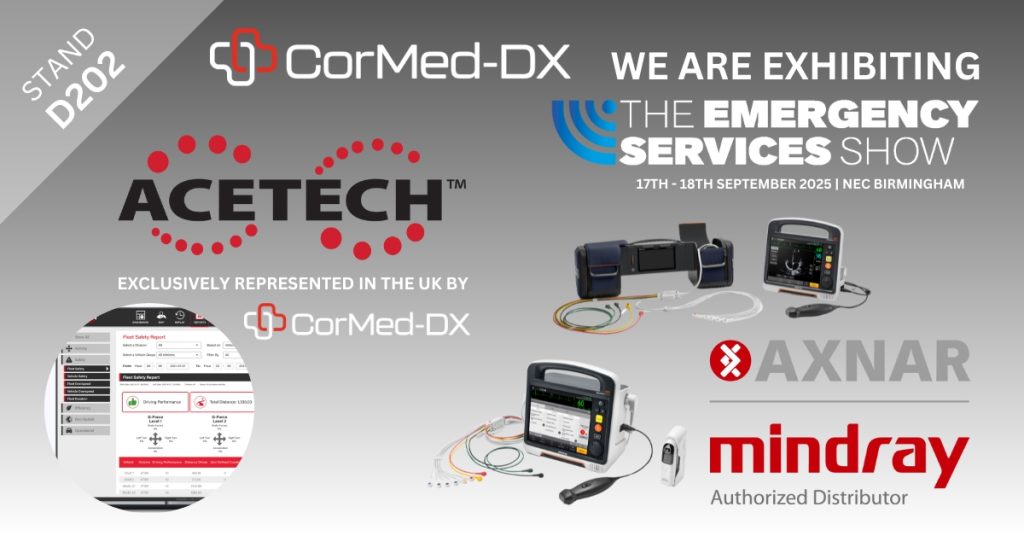
HALL 5 STAND D202
At this years Emergency Services Show, CorMed-DX are celebrating two new business partnerships for 2025.
ACETECH™ GLOBAL - who are exclusively represented by CorMed-DX in the UK.
AXNAR GmbH, collaborating with Mindray to offer a range of advanced medical devices tailored for emergency medicine.

The Emergency Services Show - ACETECH GLOBAL
CorMed-DX now exclusively represent ACETECH™ in the UK, bringing together our expertise to enhance innovation in the UK ambulance market.
By working together, we aim to improve efficiency, enhance patient outcomes, and support ambulance services with the tools they need to operate at the highest standards.
ACETECH™ is a global leader in providing innovative vehicle intelligence solutions for emergency service fleets. Their range of solutions include: cloud-based fleet management software, specialised safety and eco-friendly modules, solar solutions, and intelligent electronic control units (ECUs).
These solutions are designed to seamlessly integrate with clients’ vehicles, enhancing performance, improving safety, and revolutionising fleet operations.
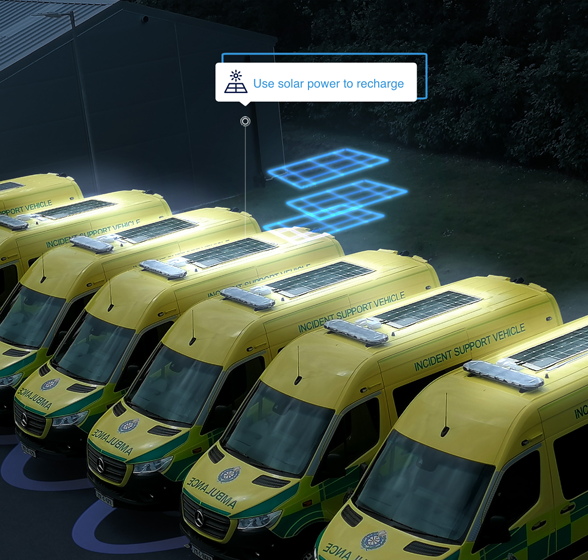
ECO SOLUTIONS FROM ACETECH
Gain top energy efficiency and reduce your fleets environmental impact.
Cut down on energy waste and unnecessary idling, and use technology to extend the usable life of assets.
Smart Idling turns the vehicle on and off exactly when it is needed. Automatically creating better fuel economy.
Using start-stop technology, your engine will turn off automatically when it’s not needed. If any low-voltage or temperatures are detected it can auto-start to keep equipment running.
ACETECH’s Anti Idle Mitigation Solution is a full compliant product for anti idling relevant to the NHSE National Specification.
Using solar power to recharge assets instead of relying on engine idling offers several key advantages:
✓ Fuel Saving
✓ Lower emissions
✓ Extend vehicle lifespan
✓ Quiet operation
✓ Energy independence
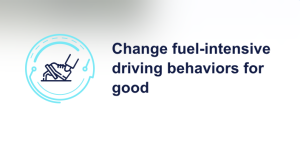

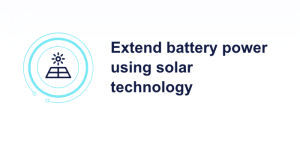

The Emergency Services Show - AXNAR UK
CorMed-DX Founder Craig Hall has taken on the very important role of Managing Director of AXNAR UK.
AXNAR UK are proud to partner with Mindray to deliver real value-for-money to the UK Pre-Hospital market.
By combining Mindray’s innovative and reliable Defibrillator and Ventilator technology with our extensive industry expertise, AXNAR UK are committed to providing real cost-effective solutions that enhance the capabilities of emergency care.
An integrated approach ensures that Emergency Responders have access to state-of-the-art equipment designed for rapid, accurate diagnostics and efficient patient care, ultimately improving outcomes while maximising resource efficiency.
This collaboration not only reinforces the dedication to advancing pre-hospital care but also underscores the commitment to sustainability and true whole life cost & affordability in the healthcare sector.
AXNAR UK’s range of Mindray products covers:
✓ Defibrillators
✓ Ventilators
✓ AED
✓ Patient Monitoring
✓ Ultrasound
✓ Syringe Pumps
Mindray sets the standard for the treatment of patients during transportation. Devices offer first-class performance and reliability, both inside and outside the hospital.
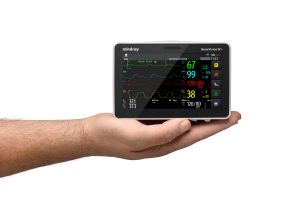
-300x200.jpg)
